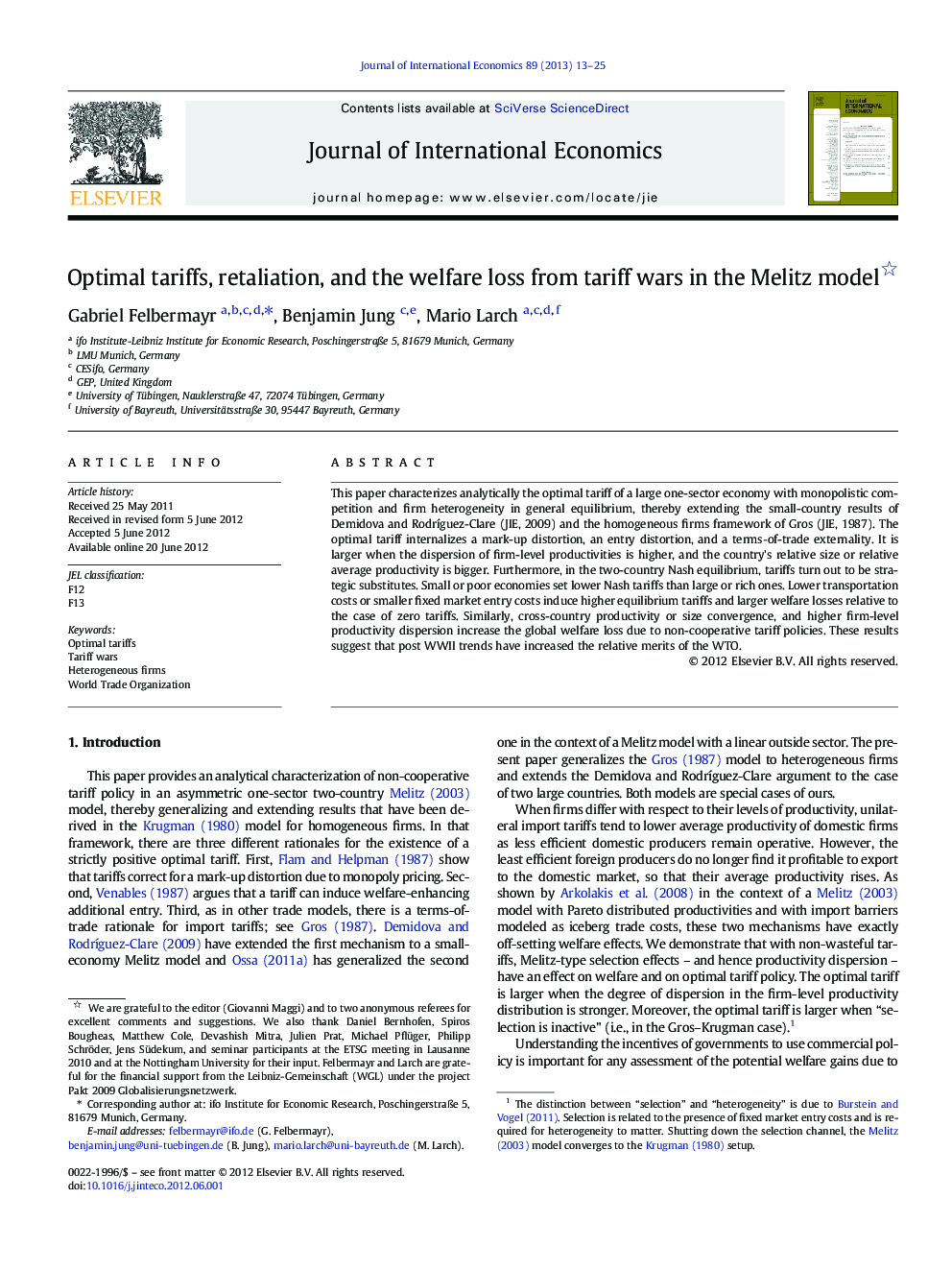| Article ID | Journal | Published Year | Pages | File Type |
|---|---|---|---|---|
| 962974 | Journal of International Economics | 2013 | 13 Pages |
Abstract
This paper characterizes analytically the optimal tariff of a large one-sector economy with monopolistic competition and firm heterogeneity in general equilibrium, thereby extending the small-country results of Demidova and RodrÃguez-Clare (JIE, 2009) and the homogeneous firms framework of Gros (JIE, 1987). The optimal tariff internalizes a mark-up distortion, an entry distortion, and a termsâof-trade externality. It is larger when the dispersion of firm-level productivities is higher, and the country's relative size or relative average productivity is bigger. Furthermore, in the two-country Nash equilibrium, tariffs turn out to be strategic substitutes. Small or poor economies set lower Nash tariffs than large or rich ones. Lower transportation costs or smaller fixed market entry costs induce higher equilibrium tariffs and larger welfare losses relative to the case of zero tariffs. Similarly, cross-country productivity or size convergence, and higher firm-level productivity dispersion increase the global welfare loss due to non-cooperative tariff policies. These results suggest that post WWII trends have increased the relative merits of the WTO.
Related Topics
Social Sciences and Humanities
Economics, Econometrics and Finance
Economics and Econometrics
Authors
Gabriel Felbermayr, Benjamin Jung, Mario Larch,
